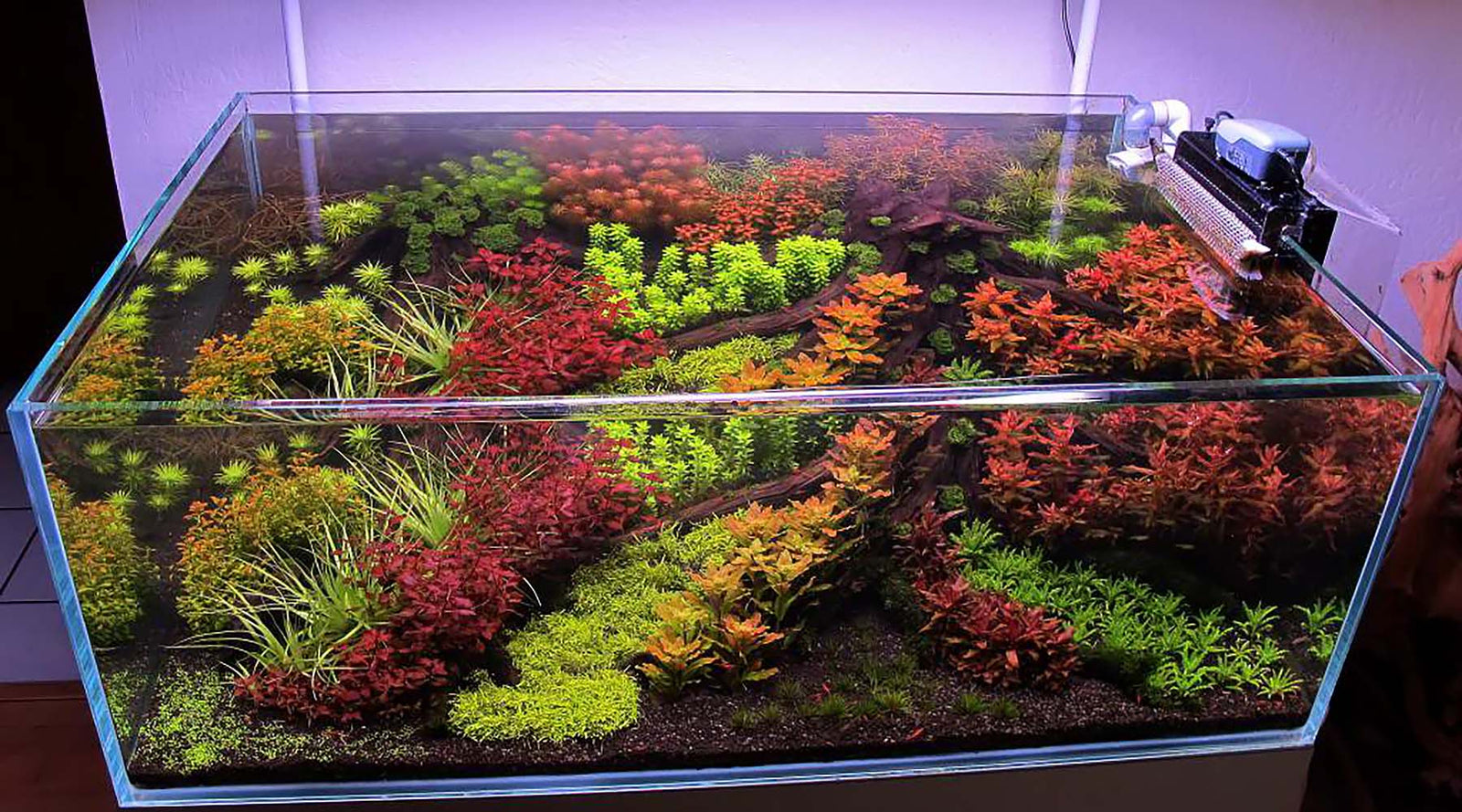Your Cart is Empty
Analysis of the Estimative Index (EI) nutrient dosing approach
February 04, 2025 4 min read

Non-Limiting Philosophy
EI aims to dose all nutrients in excess by heavily flooding the water column with nutrients. Levels are normalized at the end of each week with large (50%) water changes. The goal is to provide plants with an unlimited amount of nutrients.
The EI philosophy can be simplified as follows: Fundamentally, it is difficult to accurately measure the exact uptake rates in a tank for any given nutrient. This is especially true when there are different plant species and other growth parameters (light/CO2) in the tank. However, dosing everything "in excess" removes any possible nutrient deficiency from the analysis (we assume the plants are getting all the nutrients they need from the abundant amount in the water column) and allows the aquarist to focus on optimizing the other growth variables: light, CO2 levels (this is usually the hardest thing to get right), and other water parameters.
But what about algae? The EI theory is based on the idea that if plant growth is taken care of, plant mass will out-compete algae. It says that the presence of algae is not determined by whether or not nutrients are available, but rather whether or not there is sufficient plant mass to compete with the algae (not only in terms of nutrients, but also space, light). Healthy plants are the best defense against algae. This is covered more in the portion about diagnosing algae issues.
A weekly cumulative dose of nutrients according to EI would be around:
NO3 - up to 20 - 30ppm
PO4 - up to 5 - 7ppm
K - up to 20 - 30ppm
Fe/traces - up to 0.5 - 1ppm
Divide the above by the number of days you will be dosing to get a daily dosing rate. Some people use higher/lower levels than the usual recommendations, and many tanks are flexible enough to work within a wide range.
Tom Barr's tanks (such as the one above) are often used as the marketing face for EI.However, his success has more to do with good maintenance, lighting quality and care than the actual nutrient levels used, but people tend to get caught up in the nutrient angle. Tom Barr is a strong proponent of the idea that high levels of nutrients in the water column will not cause algae problems if the plant mass in the tank is dominant and healthy.
The rich red colors of many "Dutch style" tanks are largely the result of lighting - not a particularly high nutrient dosage in the water column, a concept that many beginners are misled to believe. In fact, certain plant species such as Rotala rotundifolia and Ludwigia arcuata/brevipes are significantly redder when grown under a low dosage regime rather than EI.
SUMMARY OF PROS AND CONS
ADVANTAGES
- Fast growth, faster propagation, tanks fill in much faster.
- Plants that do well with heavy water column dosing will grow more robust, thicker.
- Plants that access nutrients from water column do not have to wait for root growth to develop, this reduces growth lag time between replanting cycles for certain plants.
- Deficiencies are easy to rule out, making it easier to focus on tuning CO2, light and other factors.
- Makes tank less dependent on substrate & substrate enrichment.
DISADVANTAGES
- Fast growth will require more trimming.
- Due to increased growth rates, tanks tend to look unkempt unless trimmed and managed frequently. This generally means increased maintenance work.
- Plants that are sensitive to heavy water column dosing may get stunted tips (more so in hardwater tanks); applies to various Rotala , Ammania species, Pogostemon erectus.
- Plants that require low nitrates to get red (Rotala rotundifolia/H'ra/Colorata, Ludwigia arcuata/brevipes etc) will be less red/more orange.
- Unless tank is stable, very clean, may exaggerate existing algae issues. High NO3 levels often exaggerate GDA (green dust algae) problems.

Should I use Estimative Index dosing?
Tanks that are suitable for EI dosing approach:
- If you have a very fully planted tank (>70% of substrate planted).
- Tank consists of plants that grow more robust in heavy water column fertilization; (i.e. Ludwigia pantanal & other heavy feeders).
- If you plan to farm plants and hence want faster growth rates.
- If you can keep up with the increased trimming/maintenance associated with faster growth rates.
- If you are rushing to complete a project, and need maximum growth speed.
- If you are good at tank maintenance and have a very clean tank with few triggers for algae.
Tanks that will probably do better on a leaner dosing approach:
- If you have a hardscape heavy setup with light planting.
- If your tank consists of mostly slow growers and your priority is to keep them spotlessly clean.
- If your priority is tank stability and you want slower more controlled growth speed in plants.
- If you have persistent green dust algae issues.
- Non-CO2 injected tanks.
- If you have hardwater and are facing tip stunting issues with Lythraceae (Various Ammania, Rotala species, Pogostemon erectus, etc).
Here are the links for further reading.
1. Detailed care guide to aquarium plants
2. How to grow red aquarium plants
unlock your true potential
Grow anything, defeat algae, create amazing aquascapes

























